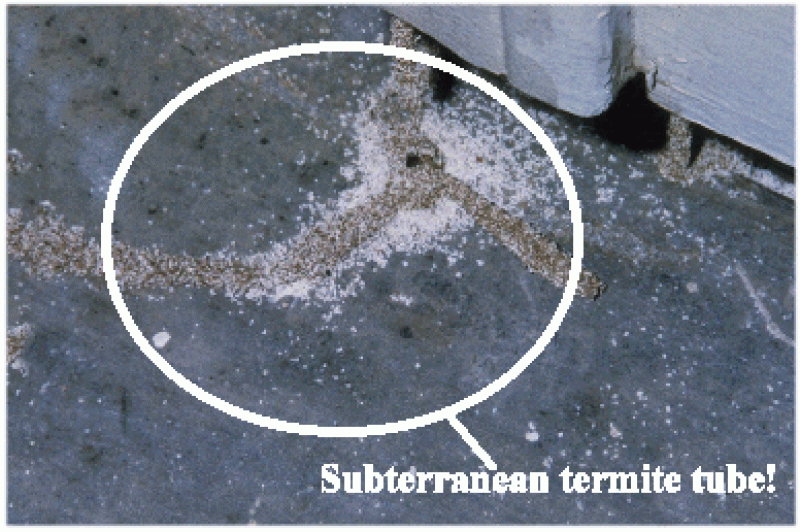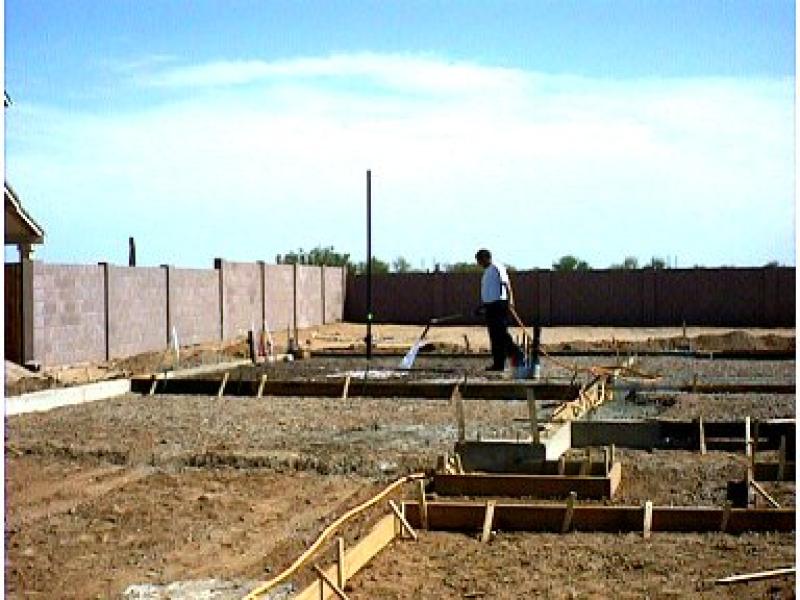
NOTE: This guide is for termite treatments made before or during construction.
Most realtors know that the majority of new homes built in Arizona are treated before or during construction for termites. However, realtors may not fully understand what a this treatment is, or what it means to their clients, the homebuyers. As the population grows in Arizona, more and more homes are being built on open desert land instead of reclaimed agricultural land. The number of subterranean termites colonies and opportunity for infestation is much higher in open desert than on reclaimed farm land. It is important that realtors know about termites and termite treatments so that they can share this knowledge with the buyers and sellers they represent.
1. What should realtors know about termite treatments made before or during construction?
Termite treatments made before or during construction are not mandated by state statute or rules. However, most new homes are treated before or during construction because lending institutions require it.
There is a misconception that a treatment made before or during construction will protect a structure from all termites. There are two types of termites that commonly attack structures in Arizona, namely, drywood and subterranean. Unlike drywood termites, subterranean termites live underground and forage via mud "tubes" to find food and water.
Wood and wood-products are gourmet dishes to subterranean termites, and they will travel considerable distances to find them.
Before or during construction a termiticide is applied to the earth before the foundation is poured, or to the wood used in the framing of the home. The amount of termiticide depends on the size of the site and the type of construction planned. Done properly, a treatment made before or during construction creates a barrier between the soil where the termites live and the wood in the structure. This barrier prevents subterranean termites from infesting the wood in the structure.
Arizona statute requires that businesses making a termite treatment before or during construction retreat any infestation for a period of 3 years from the date of the original treatment.
State law does not require the issuance of a warranty nor dictate the terms of the warranty if issued; this is a contractual matter left to the buyer and termite treatment business. Buyers need to read this document carefully because warranties may or may not include reimbursement for or repair of termite damage.
Ensuring that your client's home gets an effective termite treatment made before or during construction is important for many reasons. First of all, recurring termite problems are, at the very least, a costly nuisance. Treating a home after it is built may involve drilling holes in expensive tile, pulling up carpeting, or tearing out walls and wood beams. Wood floors and paneling may be irreparably damaged by termites, or the treatment process, and may need to be replaced.
In some situations general contractors share the responsibility of preparing a home for treatment and fixing it afterwards, but that does not account for the inconvenience to the homeowners. There is the perception that homes with termite problems are not structurally sound. Termites will not make a house crumble tomorrow, but they can do significant damage over a long period of time.
2. What are the things that realtors can do to help their clients ensure the quality and integrity of termite treatments made before or during construction?
Here are some things that realtors can do to help their clients ensure the quality and integrity of termite treatments made before or during construction:
A. Help them do their homework
- Suggest that they solicit recommendations for a reputable treatment business.
- Call PMD for general information on the complaint history of a treatment business.
- Seek out a general contractor that understands the importance of a treatment made before or during construction and who will encourage subcontractors to take care not to disturb the soil after the treatment has been made but before the foundation is poured.
B. Emphasize that any improvements or repairs they may make to their home might break the barrier
This includes anything that requires breaking or cutting in the concrete slab, or disturbing the soil that touches the outside foundation of their home (which sometimes happens when installing landscaping). Any additional slabs poured adjacent to the existing structure should also be pretreated.
C. Contractors sometimes give buyers a termite treatment information packet. Make sure that buyers read and understand this information.
The Pest Management Division maintains a database of termite inspection reports and reportable treatments in Arizona. We also have educational information available to the public. Please contact PMD with questions about treatments, termites or any other pest control topic.
What do termites look like?
Subterranean Termites
Drywood Termites
Want More Information?
Contact the Pest Management Division at (602) 542-4373.
-
Food Access
Finding Healthy Food in ArizonaConnecting people, food, and resources through partnerships with producers, non-profits, for-profits and government.
-
Get a License
Apply For, Renew, or look up a LicenseEnter our Licensing and Payment System then use the filter at the top to find the license you want to apply for or renew or find existing license information, including CEU's

